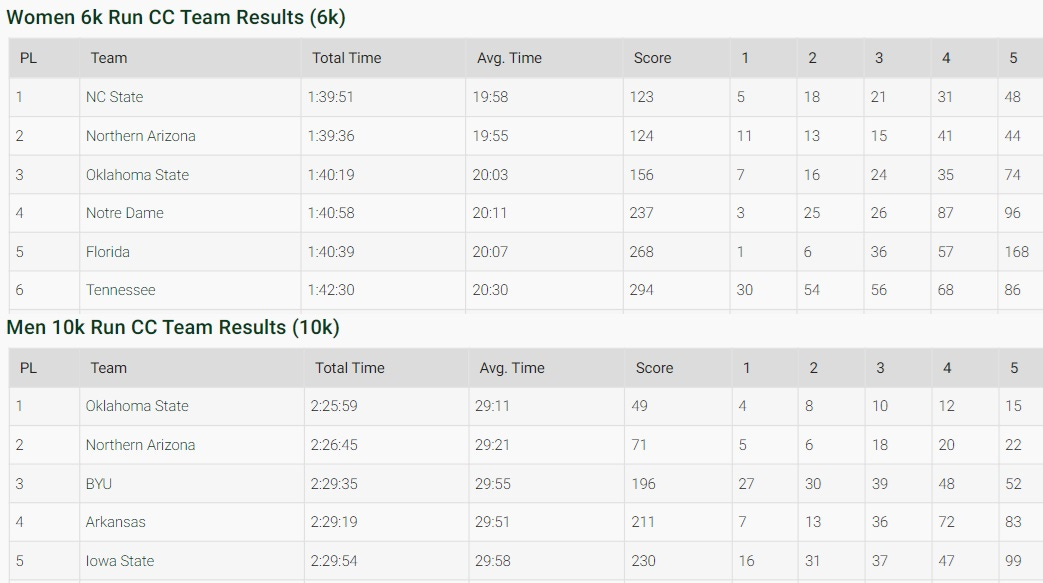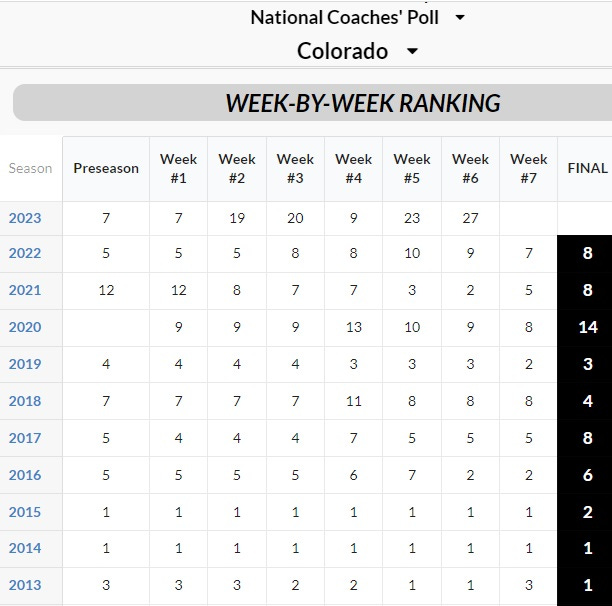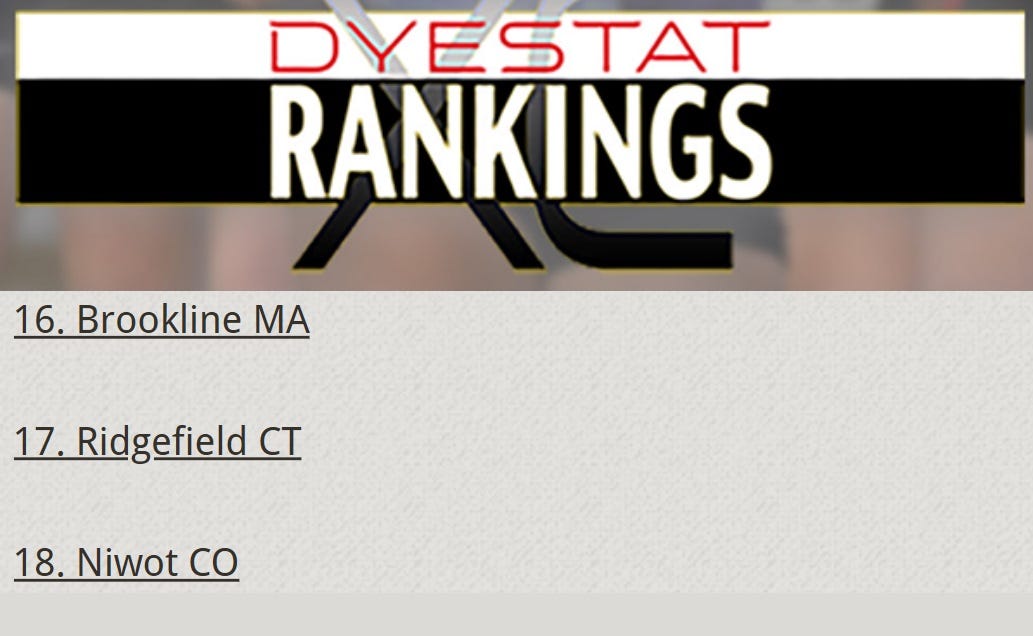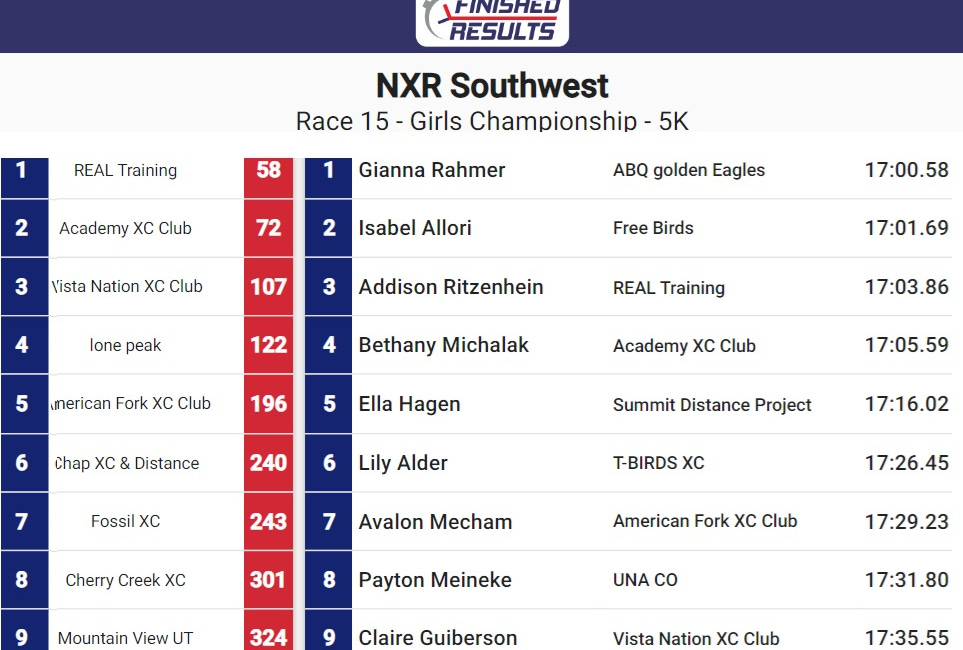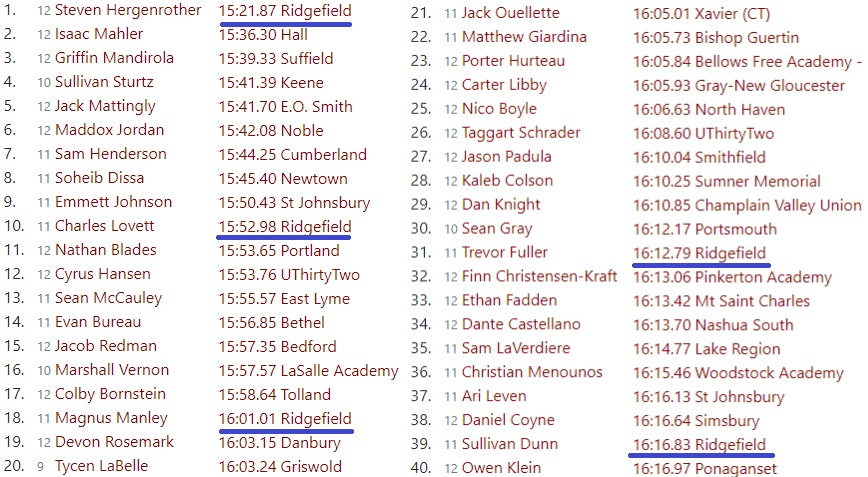Cross-country is basically almost damned near done for the year, and the 2023 season may well have possibly marked the end of an era
A zoomed-in look at a trio of fortuitously situated nationally ranked boys' teams
The 2023 NCAA Division I Cross-Country Championships were held last Saturday at Panorama Farms in Charlottesville, Virginia, with the men’s and women’s races ifeaturing 31 teams from nine geographical regions. The North Carolina State women eked out a one-point victory over the Lumberjacks (seriously) of Northern Arizona University, while the men’s race saw one absurdly good team (Oklahoma State University) comfortably defeat an extremely good one (another extremely hungry-looking septet of NAU Lumberjacks, although at least this group could grow beards).
One ineluctable downside of cross-country and its scoring rules is the frequent need to award titles to teams that didn’t look anywhere close to dominant in their championship races while those races were in progress. A winning score of 123 points isn’t low enough even in a 31-team field for observers to have a sense that any one team was really any better than the next-best team. That doesn’t delegitimize the Wolfpack’s win or any team’s narrow victory on turf, but it underscores a mild structural problem with no solution other than to accept that this does not and never will discourage fans of cross-country running from enjoying watching a championship race on the ground. There is a sui generis element in this spectating experience that has nothing to do with whatever the competitive outcome, as dictated by cold and somewhat arbitrary math, turns out to be.
The OSU men and NAU together contributed 10 runners to the top 22 scoring places. A close or relatively close race between two extremely good teams is obviously easier to grok on the fly than a close contest between two (or more) merely good teams. So anyone watching this race would have at least known which two teams were the best out there, and which of these had established somewhat of an edge.
The University of Colorado women were 19th, while the men were 27th 25th after placing only sixth in the Mountain Region Championships and requiring a generous at-large bid to reach Nationals.
After the C.U. men successfully defended their title in 2014, I interviewed most of the team’s top runners for a moribund entity known as Running Times, by then going by Runner’s World Advanced. The team hasn’t won a national title since, and this fall may have been the first one in a long time in which the Buffs never looked like a top-five threat.
C.U. coaches Mark Wetmore and Heather Burroughs are probably nearing their natural retirement. But that’s not what explains the erosion of the Buffs’ unusual excellence and its attendant mystique (often catalyzed by Wetmore offering purposefully inscrutable quotes). I don’t know if this is an official policy, and such a thing may be illegal, but to my knowledge, never in Wetmore’s long tenure has the University of Colorado awarded a track or cross-country scholarship to a foreign student. As the NCAA has come to be dominated more and more by non-Americans, this resolution has set the teams further and further back.
Yet from my perspective, it’s a defensible posture given the disproportionately rising costs of college tuition and the fact that, in the end, no one with any administrative power cares even a little about cross-country running anyway.
If you’re reading this within minutes of its delivery, the NXN New York Regional is about to get underway in Bowdoin Park in Wappinger’s Falls, New York, while the NXN Northeast Regional races will immediately follow on the same course.
Dyestat (a RunnerSpace property) has the boys of Brookline, Massachusetts, Ridgefield. Connecticut, and Niwot, Colorado, ranked in consecutive order in its latest national poll.
Because only an estimated 68 people worldwide regularly write about cross-country running without powerful external incentives to do so, I may be the only person in the world who chooses to focus overwhelmingly on high-school harriers from Colorado and New England, which are not neighboring areas.
I believe these teams should be ranked in the reverse order, or at least that Niwot would decisively defeat the other two teams on a typical day. Niwot’s top-five average at its state meet was 15:55 on a non-gimme course at 6,000’ above sea level, and the Cougars followed this up with top-five times of 15:17, 15:42, 15:45, 15:48, and 15:50 at NXN Southwest last weekend.
Readers will have to take it as an article of faith that the courses used for NXN Southwest, the Massachusetts State Championships, and the New England Champioships are of roughly equal difficulty. If this is true, then Ridgefield’s assured low stick (Steven Hergenrother) is probably enough to ensure slight superiority over Brookline in most championship situations.
New Englands:
The top two teams from NXN Northeast automatically advance to next week’s NXN Nationals in Portland, Oregon. Because Christian Brothers Academy (Bancroft, New Jersey) exists solely to produce great boys’ cross-country teams, CBA will win the team title, leaving one automatic spot for either Brookline or Ridgefield (or, obviously, any number of other teams). This region is extremely unlikely to send at at-large qualifier to Portland, so there will probably be no mutual contest in 2023 between these three teams.


